Mitsubishi’s second-gen Montero isn’t collector-grade yet, but that’s a good thing
Let’s begin this article with a confession: My search for a rough-and-tumble SUV didn’t start with a Montero. In fact, it didn’t even start with Mitsubishi. I’d venture a guess that a decent portion of today’s Montero owners would share a similar story. In the world of off-roading, more specifically off-roading with Japanese machinery, the hunt almost always starts with Toyota. Far too often, it ends with Toyota as well, and Mitsubishi never comes across a would-be owner’s radar.
Shame, really. Because the Montero deserves every shred of respect it gets in the off-roading community—and then some.
Vintage SUVs are one of the collector market’s hottest segments. Coupled with the growing popularity of RADwood-era cars, many of which hail from Japan, vehicles such as the Toyota Land Cruiser, the 4Runner, and even the creatively named Toyota Pickup are rapidly gaining fans—and value. A side effect of that climb, aside from pricing many entry-level enthusiasts out of great machinery, is that there’s a certain reticence to actually use those rides for the purposes they were built for. By and large, the Montero manages to escape that.
Mitsubishi’s golden years in the 1980s, ’90s, and the early 2000s are the stuff of dreams. Dominance in multiple motorsport disciplines, cutting-edge technology, and compelling offerings across many segments made the Tri-Diamond logo an enthusiast favorite. Toyota and Honda might have dominated the sales charts, but Mitsubishi, along with Nissan, fielded plenty of equally compelling offerings. (The same can’t really be said of contemporary Mitsubishi, and can only barely be said of Nissan today.) Each of the four contributed mightily to what’s widely considered the golden age of the Japanese automobile.
Like the Land Cruiser, the Montero (as it was known in North America, Spain, and most of Latin America) was sold all over the world, though often under the names Pajero or Shogun. Whatever you know it as, it’s impossible to separate the platform from its reputation built through transcontinental rallying, where through the years it helped cement Mitsubishi as the all-time winningest manufacturer at the grueling Paris-Dakar rally.
Marketplace
Buy and sell classics with confidence
Being such a prolific car on a global scale, the lifespans for each generation of the Montero overlap considerably. Dig into the history of this thing, and you’ll find a lot of instances where “X country got a new Pajero in this year, but the old one soldiered on in Y and Z countries for another half-decade.” (There were also versions licensed and produced by other manufacturers, just in case it wasn’t already tough enough to follow this lineage.)
Generally speaking, however, the first-generation Montero spanned from 1981–91, the second-gen model ran from 1991–99, and the third-generation Montero, the last one sold in the U.S., ran from 1999–2006. We’re going to focus on the second-gen model here.

Throughout the ’90s, the American car market saw a slow but steady growth of rugged, body-on-frame, true 4×4 offerings. Toyota’s Land Cruiser was fresh off the debut of an all-new generation, the much-lauded 80 Series. Land Rover had been making the boxy first-gen Discovery since 1989, and the more luxurious Range Rover would debut mid-decade in 1994. Jeep was in on the action, too, with its venerable XJ Cherokee and the Wrangler.
Mitsubishi had originally pitched the first-generation Montero as a luxury off-road competitor, eyeing the Land Rover Discovery and even the Range Rover as its competitive set. The second-generation Monty backed off the luxury angle a tad, though it was by no means spartan. It claims a number of technological firsts among Japanese 4WD vehicles, including electronically-adjustable shock absorbers, multi-mode ABS, and, most importantly, Super Select 4WD. This groundbreaking tech (marketed in North American Monteros as Active-Trac) utilized a viscous-coupling center differential that offered the advantages of part-time and full-time four-wheel-drive, as well as on-the-fly shifting from 2WD to 4WD at speeds of up to 48mph in most versions. When the going got really tough, the transfer case was also able to deploy 4-high and 4-low, both with a locked center diff.
Styling for the second-gen car softened the boxy first-gen design a bit, canting the windshield and grille back for mildly improved aerodymnamics. In 1998, general export Monteros, such as those headed stateside, received a facelift that included flared fenders, a new grille, new bumper, and more. These models are commonly referred to as “gen 2.5” or “blister-flare” Monteros, and are considered the best looking versions to make it to the U.S.
I’m biased, of course; I’ve called a gen 2.5 ’98 Monty mine since 2021. It wasn’t just the looks I was after—I wanted a capable off-roader that, so long as I continued to care for it, wasn’t likely to strand me mid-adventure. Nearly 25,000 miles and two-plus years of ownership later, the Montero has delivered on that promise.
Together, this truck and I have wandered through everything from Utah’s high desert to the water-logged fall foliage of Ohio’s Hocking Hills region to the sand- and snow-covered forest service roads here in Northern Michigan. And when we get there—wherever “there” is, I’ve never had to back out of a two-track for fear of overmatching my Montero. When the day is done, we simply pop open the tent and call our parking spot home for as long as we choose. It’s opened up adventures to me in a way that none of my previous cars have.
My appreciation extends beyond the fact that the Montero will happily go anywhere—I know that it’s going to get me home, too. You can’t say the same for any 25-year-old, high mileage car that’s regularly used as intended. That it has never failed to start on the first crank and has stood up to all I’ve thrown at it give me the confidence to know I’m just a key turn away from my next adventure.
The root of that dependability is the robust drivetrain. A 3.5-liter, 24-valve SOHC V-6 provided around 200 hp and 228 lb-ft when new, and it paired with a four-speed automatic transmission with an electronically-actuated button-style overdrive. The combination is pretty much stone-dead reliable, provided you’ve kept current on regular maintenance items.
That said, there is one malady that every one of these Monteros suffers from: Due to a poor design, the factory crank bolt will, over time, develop fatigue cracks which can lead to it breaking off in the crankshaft. Luckily, Mitsubishi revised the design for the bolt (twice, actually) and a new one can be found without too much difficulty. If you’re ever inspecting one for purchase, you must ask about the bolt; many of these have had the replacement unit fitted to them already, but if the one you’re looking at hasn’t, you’ve just found the first item for your to-do list.
Another common issue with these engines is that the valve stem seals will harden over time, eventually causing the engine to pull a little bit of oil past the valves in high-vacuum situations, like when you’re idling for a long time. So long as you keep a regular eye on the oil levels (I check mine before every fourth or fifth drive, or after long periods idling), you can simply add a bit of oil to keep things topped off. The fix is a bit tedious and time-consuming, but with a decent set of tools and some time, it’s manageable. As with basically every known failure point on this thing—and there aren’t many—the thriving community surrounding these machines has plenty of walk-throughs and guides for the fix.
Living in Northern Michigan has highlighted this Montero’s winter package, an option that provides some very warm two-mode seat heaters and, perhaps the most desirable option on these machines, the locking rear differential.
Speaking of the rear end, The rear differential in the gen 2.5 had the lowest final-drive ratio (4.27:1; the other generations offer 4.88:1 and 4.63:1, depending on year and package) which helped lower emissions and return marginally better fuel economy, but it also resulted in it being rather sluggish off the line. Getting around town is still a breeze, but you’ll want to plan on-ramp merges carefully.

The cabin is remarkably capacious and presents a commanding view that’s perfect for trail use. The upright driving position can leave you feeling like you’re sitting on a barstool if you corner too enthusiastically (body roll is amplified if, like me, you’re carrying adventure accessories like a heavy tent on the roof). Then again, no one buying a Montero is looking to maximize their lateral g forces. Most folks ditch the folding third-row seats in favor of added trunk volume. The controls are all straightforward and functional, though radio upgrades are a popular mod—as with many vehicles from this era. Driver’s seat wear and splitting in the leather is common, and my example is no different. I’ll be on the hunt for a new seat next year.
Typically, these spotlights tend to focus on the collectibility of the subject vehicle. That discussion is conspicuously absent here because, for the most part, Monteros are still cars that are well-used—often times quite hard. But that also means that prices for them have remained relatively accessible.

While we do not track the Montero in the Hagerty Price Guide, data suggests that interest for the off-roader is increasing. Average insured value (AIV) is on the rise, from $6250 in 2018 to $8900 today. But the list of solid, reliable off-roaders that can be had for mid- to high-four figures is small, and dwindling. I’ve seen plenty of solid gen 2 and gen 2.5 Monteros sell or be offered for sale at figures closer to that $6250 figure in recent months.
Policy count, while only in the double digits currently, is also climbing. The number of Monteros insured by Hagerty has doubled since 2020. Boomers make up half of policies, with gen X and millennials following at 30 and 20 percent, respectively. The share of boomer ownership outstrips their overall share of the market, but gen X and millennials still track with their overall shares.
Still, it seems a bit of a stretch to think the second-gen Montero (or any Montero, for that matter) is going to suddenly catch up to the golden child, the Toyota Land Cruiser. Given that reality, I’d offer this encouragement: Unless you’re hell-bent on finding the perfect, time-capsule Monty to pickle and hold, consider shifting your perspective. The Montero—while remarkably capable, worthy of your respect, and significant for Mitsubishi’s history—is best enjoyed through its use.
There are plenty of attainably priced examples out there and a thriving community of enthusiasts and aftermarket support to make this a perfect platform for the 4×4-curious, the Japanese-vehicle curious, or for those who, like me, can only swing one interesting car with their current budget. It’s modern enough to benefit from diagnostic tools such as OBDII, stout enough to take a little beating without asking too much in return, yet interesting enough to be a great conversation point at your local cars & coffee or off-road rig meet-up.
Find one, point it toward the nearest trail, and make memories that will outstrip any resale potential.
***
Check out the Hagerty Media homepage so you don’t miss a single story, or better yet, bookmark it. To get our best stories delivered right to your inbox, subscribe to our newsletters.



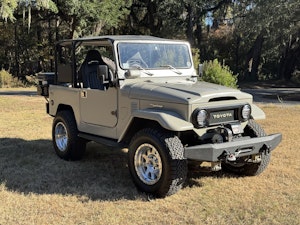
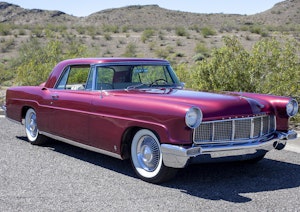
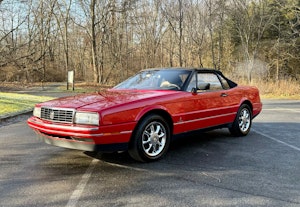
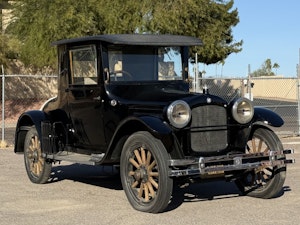
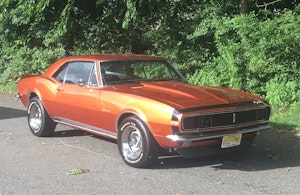
















How did you keep the independent rear suspension from going into massive rear camber with the extra weight of the tent? I had a 2000 which would squat with a bag of groceries in the back. No wind noise with such an old vehicle, you can hold a normal conversation at 80 mph. Mine never let me down, and it was an Honorary member of the local 4runner 4×4 club.
I own a 1990 Montero, my block needs to be rebuild. Or buy a new V6 3.0 liter. The fact is the engine needs a new one
Hi Chris, The Gen 2 and Gen 2.5 Monteros don’t have independent rear suspension, they’re still using solid axles back there. My fix for wind noise was a quick and dirty deflector fastened to the top of the forward-most crossbar, which eliminated the air rushing under the tent and above the roof. Total game changer!
Excellent article. My family has owned 3 ‘94’s over the years and we all fondly remember Monty. Two of ours were manual transmission machines which definitely helped performance a bit. Cloth interiors seem to last forever. All 3 burned some oil but all were well in the 200,000 miles. We later owned a couple of different Land Rovers with all of the usual Land Rover headaches. I occasionally do some scouring for an old Monty, even now, and I am currently restoring a 1984 Isuzu trooper just because it was rust free from Texas and looked forlorn when I found it.
The second generation Isuzu Trooper is a great SUV especially if you get one with a manual transmission. They’re on par with Toyota in terms of reliability from my experience and are great off road. Most regular maintenance parts are still pretty easy to find and other replacement parts aren’t too bad either if you look on eBay or salvage yards. Even upgrades are available although the trooper doesn’t need much aside from an ARB front bumper and ARB air lockers to be super capable off road. You can generally find them in good shape for around $5,000 and with another $5,000 in upgrades you’ll have a fantastic overlanding rig that would take at least ~$20,000 to replicate if you went with a Toyota since Landcruisers and 4Runners in good shape go for around $15,000 these days. As overbuilt as they are and as reliable as they are or can be (the automatic transmissions can be weak if they weren’t maintained properly and certain years had issues with intake manifold gaskets, an easy and cheap fix by the way, or burning oil with a recall being issued for this problem) I hope people realize this and take advantage of the good deals on them before it is too late. The 90s Japanese four wheel drive SUVs and trucks are special and I enjoy reading about them.
The Montero and Montero Sport were great SUV’s. Too bad they are gone.
The errors in this article are almost too many to count:
The Gen 2/2.5 Montero was sold in the US from 1992 until 2000, not 1991 to 1999, and the Gen 3 went on sale in 2001.
The problem with the crankshaft bolt is that it can develop fatigue cracks and break off in the crankshaft (Mitsubishi updated the design twice) – if it loosens up it’s only because the last person to do the timing belt failed to get the bolt tightened properly.
The valves guides don’t have a wear problem, it’s the valve stem seals that harden with age and cause oil burning – unlike the valve guides, the valve stem seals can be replaced without removing the cylinder heads from the engine.
Ryan, thanks for the notes.
Our research shows that Gen 2/2.5 was 1991–99, where are you seeing ’92–2000?
Thanks for the clarification on the crank bolt: I will clarify that!
Ditto the Valve stem seals, I got those mixed up in research. Thanks for catching that!
What Ryan said 😉
Nathan, Why new seats? Unless these pictures were staged and you’re really go glamping , a pair of Baja blanket seat covers should do the job. First a few pieces of duct tape on the seams. You can get it in different colors but I suggest the tough durable look of the classic argent. While you’re at it, why not try a bottle of Lucas next oil change? It might work and since you’re on a ‘top it off’ schedule now. You could also decrease body role by pitching a tent on the ground. They set up in minutes and even the larger ones use up little space when folded even with an air mattress. Or are you afraid of snakes or something. All boy no cow?
Heaven forbid someone do something they enjoy in a different manner than you… He want’s a roof top tent because he likes it and you mock him? Let people enjoy things.
You also have no room to talk. Duct tape on the seats? C’mon. That’s just hack garbage that ends up with a bigger mess than just leaving it ripped. Learn how to not be a hack before telling other people what they should do.
Randy, A good natured ribbing is often mistaken. Honestly ,who would really suggest duct tape and a bottle of pour and go?
If a “good natured ribbing” was your goal you missed the mark when you ended with an insult.
Nathan is working to enjoy his Montero while working to maintain and improve it for how he wants to use it. Why be facetious about it? It’s a lot easier to encourage others, and that comes with the bonus of never having to explain your “joke.”
This is awesome, thanks Nathan! Where do you recommend an aspiring Monty owner keep an eye out for people selling?